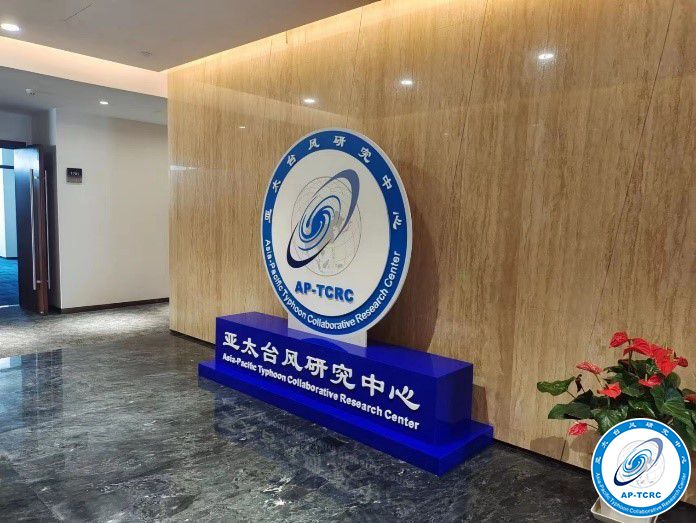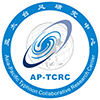Introduction

The Asia-Pacific Typhoon Collaborative Research Center (AP-TCRC) is a newly established international joint typhoon research unit, located in the Lingang Special Area of Shanghai, China. It is supported by the ESCAP/WMO Typhoon Committee (the Committee) and hosted by the Shanghai Municipal Government of China and the China Meteorological Administration.
The AP-TCRC aims to strengthen scientific and technical cooperation with the Committee and other related international organizations. It provides a sustainable platform for conducting collaborative research on advanced sciences and key techniques in typhoon monitoring, typhoon forecasting and modelling, and typhoon associated disaster prevention and mitigation.
History
The Asia-Pacific Typhoon Collaborative Research Center (AP-TCRC) is the only international typhoon professional research institution in the world, which is strongly supported by the China Meteorological Administration (CMA) and the Shanghai Municipal Government, and was included in the seventh ministry-municipality cooperation project between the CMA and the Shanghai Municipal Government in July 2019, and formally agreed to by the Typhoon Committee (TC) in February 2021 at the 53rd meeting of the TC.
On October 25, 2021, the Management Committee of Lingang section and the Shanghai Meteorological Service signed a cooperation agreement to jointly promote the construction of the AP-TCRC.
On December 1, 2021, the AP-TCRC was inaugurated in Shanghai and has settled in the Lingang section of Shanghai Pilot Free Trade Zone.
WMO Assistant Secretary-General Dr ZHANG Wenjian made opening remarks on behalf of the WMO Secretary-General at the 1 Dec. inaugural ceremony. It was also attended by TANG Zhiping , Vice Mayor of the Shanghai Municipal People's Government of China; YU Yong, Deputy Administrator of China Meteorological Administration (CMA); Sanjay Srivastava of ESCAP; Naoyuki Hasegawa, Chairperson of the Typhoon Committee; and YU Jixin, Secretary of the Typhoon Committee.
Tropical cyclones account for one third of both deaths and economic losses from weather climate and water- related disasters in the last 50 years. On average, there are about 84 tropical cyclones globally every year, of which around one-third occur in the Western North Pacific region, said Dr. Zhang.
Climate change is increasing the impact of tropical cyclones, he said. The Intergovernmental Panel on Climate Change (IPCC) Sixth Assessment Report stated that it is very likely that the most intense phase of typhoons in the Western Pacific has shifted northwards. It is likely that the global proportion of major tropical cyclones has increased, with associated risks of stronger winds, heavier rainfall, higher waves and storm surges and coastal flooding.
"From this, we can see that there is a pressing need for strengthening regional and international cooperation in technical development of typhoon monitoring and forecasting and early warning, and prevention and mitigation of the extreme typhoon disasters," said Dr. Zhang.
The AP-TCRC will initially prioritize areas with a focus on key techniques of typhoon numerical modelling and prediction, incorporating risks and impacts on societies, as well as tropical cyclone observation experiments with international and regional collaboration. It will promote the frontiers of sciences and technologies such as Artificial Intelligence, Big Data and Earth System modelling, and make these technologies available not only for the region but also for the globe, he said.
The AP-TCRC will be an official institution of the Economic Commission for Asia and the Pacific/ WMO Typhoon Committee, which has established an effective mechanism in coordination of typhoon forecasting and early warning services. It will become a centre of coordinated research and typhoon technology transfer mainly in Asia and the Pacific, and potentially over the globe.
In January 2023, the first International Scientific Steering Committee of the AP-TCRC was established, with 12 renowned scientists from 6 countries joining the committee. After the meeting, the AP-TCRC practiced the management responsibility of "Shanghai International Typhoon Joint Research Program" and released the "Shanghai International Typhoon Joint Research Fund 2023 Project Guidelines" to the world, inviting scientists from all member countries of the Typhoon Committee to carry out collaborative research and development work in the form of Time-bound Pilot Project. As of October, this year, the AP-TCRC has welcomed the participation of several foreign scientists.
Meanwhile, the AP-TCRC has also carried out a number of international works. In terms of technology application, the AP-TCRC has actively undertaken global typhoon forecast verification, and has evaluated tropical cyclone paths and intensity forecasts in various regions of the world. In terms of academic journals, the English-language international journal Tropical Cyclone Research and Review hosted by the AP-TCRC was awarded the first Impact Factor of 2.9, and undertook the publication of a special issue of the 10th International Tropical Cyclone Symposium Review, which demonstrated the latest progress in climate, weather, modeling and observation in the field of global typhoons.
Location
1539, Haigang Avenue, Shanghai 201306, P.R.China

